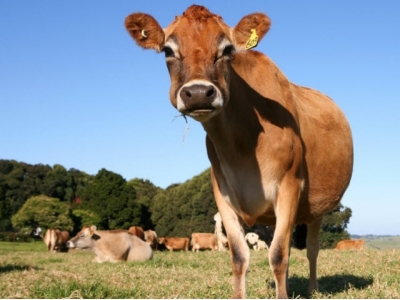Selenium form may play role in increasing cattle fertility

Use of supplemental organic selenium may boost cattle fertility more than an inorganic supplement.
The work was an expansion on previous studies looking at forms of selenium (SE) and the interaction with gene expression in liver and muscle tissue, said Phillip Bridges professor in the department of Animal and Food Sciences at the University of Kentucky.
“They determined that an equal mixture of inorganic and organic supplemental selenium yielded a more preferable gene expression pattern, indicative of a more optimal physiological capacity, in liver and muscle tissue, than if selenium was supplied in only inorganic or organic forms,” he told FeedNavigator. “Based on these responses, they then wanted to know if a mixture of supplemental selenium forms also had a preferable effect on reproductive tissue function and performance.”
The group’s goals were to understand how cows respond to the form-specific selenium supplements and to offer use recommendations, he said.
“Our results suggest that form of Se fed to cows affects the production of progesterone but not that of estradiol,” said the researchers. “Further investigation of organic Se–induced increases in progesterone, and potentially the effects of increased progesterone on the establishment of pregnancy, especially in cows of lower fertility, is warranted.”
Why selenium
Soils that are low in selenium are common in the US, said Bridges. But, lack of the mineral in the diet can lead to poor growth, reduced immune response and impede fertility in foraged-based cattle.
“Se is primarily present in forages in an organic form,” he said. “However, it remains typically supplemented by the producer as an inorganic form.”
Past research on forms of selenium suggests that a mix of inorganic and organic offer the best results for an increased ability to synthase selenoproteins, he said.
“At the cellular level, why the difference in response to the forms of Se is really not well understood,” he said. “However, a priori, supplementing both forms of selenium may be augmenting both inorganic and organic selenium-mediated metabolism.”
Experiment details
In the experiment, researchers fed 33 cattle one of three mineral mixes – one that included 35ppm of selenium from an inorganic source (ISe), an organic source (OSe) or a 50/50 mix of both (MIX) for 180 days, said the scientists.
After 170 days cattle were injected to induce regress of corpus luteum (CL) and checked for behavioral estrus, they said. from days 4 to 8 after estrus follicular growth was watched by ultrasonography.
On day 6, cows were treated to start regression of the developing CL and “differentiation of the dominant follicle of the first follicular wave into a preovulatory follicle,” they said. And, on day 8, the preovulatory follicle was aspirated.
Blood was collected on days 6 and 8 and checked for levels of progesterone and estradiol, along with the preovulatory follicle, they said.
Results
The form of selenium did not influence the systemic concentration of estradiol on either day 6 or 8, said the researchers.
But, the form did affect the systemic concentration of progesterone on day 6 and the concentration of progesterone in the follicular fluid with the highest levels in cows getting the organic treatment, they said. It also tended to influence the diameter of the follicle by day 8.
“The concentration of progesterone in MIX-supplemented cows was OSe-supplemented cows did not differ from those supplemented with ISe or MIX.”
However, some of the results from the experiment were a surprise, said Bridges. The use of a 50/50 mix from both forms of selenium does not lead to an intermediate phenotype between what is seen from sole use of either form of selenium.
What’s next?
More work is needed before a definitive form recommendation can be made, said Bridges.
“Supplementation with a defined form of Se represents a management practice that could be readily adopted at the production level to increase early luteal progesterone, and therefore potentially development of the uterine endometrium, early embryonic health and fertility,” he said.
Additionally, the group is interested in investigating how the mixed form of selenium acts to increase the early luteal phase concentrations of P4, and how that increase influences the uterine endometrium and the conceptus’ development.
“Those studies would bring us closer to making a recommendation concerning pre-breeding supplementation of a specific form of Se,” he said.
Related news
 Formulating diets for individual cow needs more suited to smaller scale operations
Formulating diets for individual cow needs more suited to smaller scale operations With increasing competition and shrinking margins, producers need maximum efficiency on their dairies. Precision nutrition is said to help save labor costs
 Some forage diets may need added nutrition for dairy cows
Some forage diets may need added nutrition for dairy cows An international team of researchers reported results of trials examining nutrient requirements of dairy cattle on low forage proportion and high forage proport
 Rumen-protected folic acid may boost dairy cattle production, reproduction
Rumen-protected folic acid may boost dairy cattle production, reproduction Supplementing dairy cattle diets with rumen-protected folic acid may improve milk production, reproduction and boost intake.